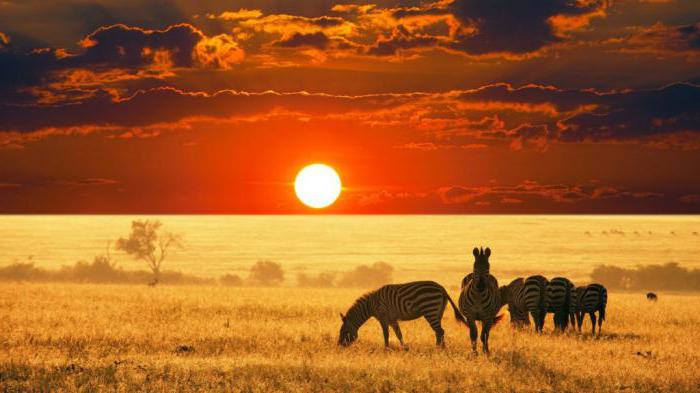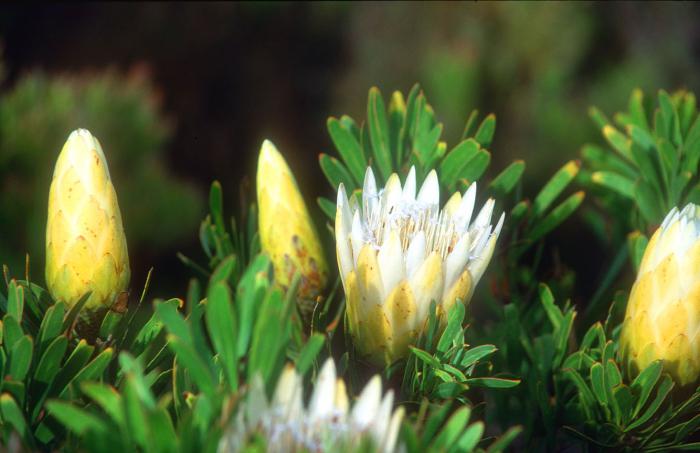CIVETTA AFRICA: description and photo
In the world there are many strange animals thatsurprise with their appearance, habits or abilities. For example, a cheetah can reach speeds of up to 130 km per hour and outrun the car, and the chameleon can easily be disguised as any environment, changing the color of its body. One of these interesting animals is the Civet African. This animal is listed in the Red Book and is under close guard. Information about him is stated in the article.
Appearance

There are several kinds of civet, namely six. African - the largest in size of the entire Viverova family. Externally, the Civet African, the photo of which is presented in the article, is very reminiscent of partly martens, and partly of the cat. Because of this similarity, this animal is called a viable cat at home.
His head is broad, oblong with acuteface. Ears are short, but with a sharp top. The length of the body in adults can reach 70 cm, including the tail, which is approximately 35 cm long. The Civet's tail is very strong and strong. At the base it is wide and gradually narrows to the tip.
The legs of the animal are not very long and thin, suchlimbs help him during jumping. These animals are strong enough and fast. Each foot has five fingers with not very sharp non-retracting claws. It is interesting that the lower part of the paws (where the cats have cushions) is completely covered in the vivert cats with hair.
Civet African can not boast of fur: he is all over the body loose, rare and rude. These mammals are short-haired. Their feature is the mane. It is located in the middle of the body and stretches parallel to the chord, starting at the beginning of the neck and ending at the tip of the tail. This feature helps the African civet during dangerous situations. When the animal is frightened, it fluffs the mane, puts it upright and grows on its hind legs, trying to seem bigger than it really is. The mane can reach a length of up to 10 cm.
The mouth of the Civet African is strong enough, its teeth are wide and strong, capable of cracking very hard materials. In total, the animals have forty teeth.
The color of the animals is very unusual. Behind the skin there are many black, dark brown spots and stripes on a light background. This color of the back of the body is very similar to the hyena coloring. But the muzzle and neck of the animal are very similar in color to the raccoon. On a light muzzle, as if wearing a black mask around the eyes and spout. The general color is also different. It can be white, red, light brown, gray, etc. In general, the Civet African is pretty and unordinary.
Weigh one individual from 7 to 20 kg.
Lifestyle

This is a terrestrial animal. Civet African is basically a nocturnal lifestyle. He prefers coolness, often hunts during the rain. The favorite time of day is the hours from sunset to midnight. In general, these animals are very alienated and secretive, it is quite difficult to see them. Usually they are carefully hidden in tall grasses. Individuals lead a lonely life, except for the breeding season. These animals swim well.
African civets are omnivorous. They eat mainly insects and small animals, can hunt small birds, but also eat plants, carrion, eggs and larvae of insects or other animals. Civet lives in the nests. Such "houses" they settle in small caves, empty poles of trees, in burrows of larger animals, for example anteaters.
Hunting

Civet African in nature hunts mostlyat night. Extraction these animals for a long time looking for and watching her, hiding in the tall grass. Picking up the best moment, the Civets attack the victim, grabbing her teeth. They tightly squeeze their jaws, not allowing the prey to escape, and begin to shake their heads violently. Due to the shaking of the victim, the spine breaks, which leads to her death.
Reproduction
The reproduction period of the civet depends on the rangea habitat. For example, in West Africa, they can breed year round, in Kenya and Tanzania, mating runs from March to October, and in South Africa - from August to January. Pregnancy of the female lasts from two to three months. For the year the female can bring up to three litters, in each from 1 to 4 puppies.
Before giving birth, she equips herself with a new lair,in which he gives birth. Puppies are born quite developed, for example, they can crawl right after birth. On the fifth day, the kids are already walking, they leave the nest on day 18, and they begin to hunt at the age of two months. Feeds the female female babies for six weeks, after the young begin to eat on their own more solid food. CYVETTES, capable of reproduction, become one year after birth. Being in captivity, African civets very often kill and eat up their babies.
Habitat

African civets are mainly found in Africa. They live in areas that are located just south of the Sahara. These animals are not present on the Somali peninsula and in the most southern part of Africa.
</ p>>







